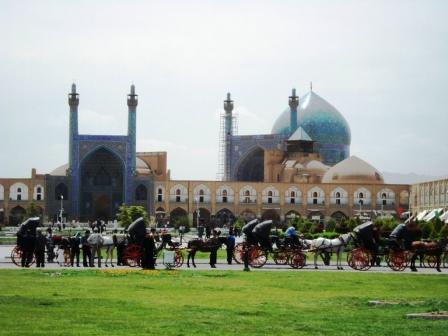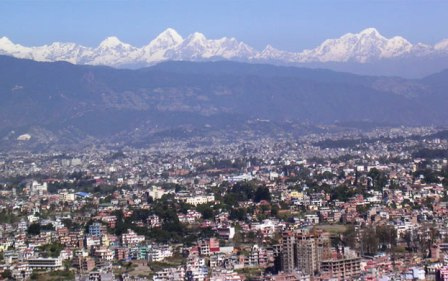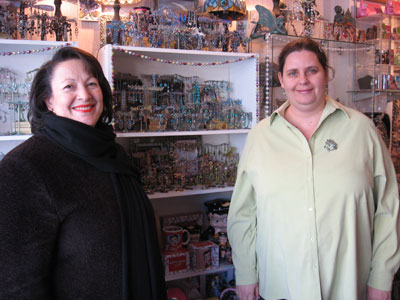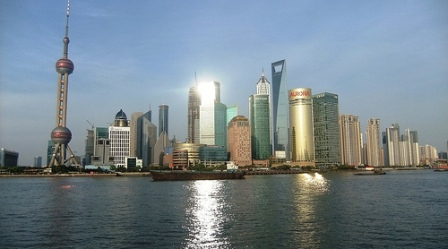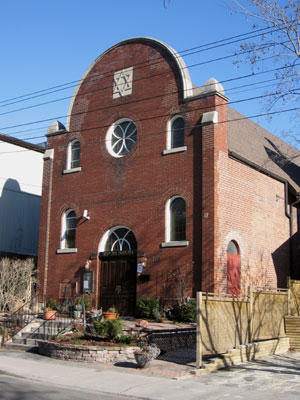The Internet has afforded us all a great opportunity to explore and learn about the world without ever leaving our comfortable homes. Social media have allowed us to connect with people in far-away countries that we otherwise would have never had a chance to meet.
Recently, I had a chance to connect with someone via Facebook who is located thousands of kilometres away from me, in a country that I may never have a chance to visit. Mohammad Reza Gohari, who prefers to go by the name of Reza, is located in the Iranian city of Rouyan and is an expert on tourism management, a subject that he also teaches at university. After realizing that we are both passionately interested in travel and tourism, we started talking and I had to admit that I knew next to nothing about Iran. Then it dawned on me that this new personal connection was a golden opportunity to learn more about this mysterious and ancient Middle Eastern country.
Reza was kind enough to agree to an interview, and in the following article you will read his insights about his home country, Iran.

1. Please tell us about yourself, where were you born, where did you grow up, where do you live now and what did you study?
I was born and grew up in Tehran. After finishing high school, I moved to Rouyan to continue my studies at Maziar University in the field of tourism management, from where I graduated with a bachelor degree. Now I am still living in Rouyan, a city in Mazandaran province in the north of Iran.
2. What is your experience in the tourism industry and what part of tourism interests you the most and why?
Now I am working in the tourism field as a writer, translator and researcher. I have taught courses in a subject called “Impacts of Tourism and Tour Planning and Management” as an assistant professor at Maziar University for two semesters (2010-2011). Currently I am working on two books, one of them is about the Impact of Tourism and the other is about the Anthropology of Tourism. I hope to be able to publish them soon. I really like tourism as a field of study and research, especially the topics of sustainability, planning, and impacts of tourism. Presently I prefer to work in the theoretical aspects of tourism, after gaining some practical experience as a tour manager and planner for student travels and working in a travel agency as a trainee.
I found out that our major problem in Iran’s tourism industry is the lack of sufficient knowledge and education among our leaders and officials, and even our graduates of tourism and hotel management. The tourism and hotel management programs at the universities in Iran are very new and have only existed for about 12 years or so. As a result, there are some weaknesses in the theoretical understanding of tourism. Sources that professors in universities use to teach students are often outdated while people working in tourism essentially only learn from practical experience and have very little theoretical knowledge of tourism.

For these reasons I decided to invest more time into learning and researching the theoretical aspects of tourism. I should say that two of my best professors, Mr. Jaber Parsaie and Mr. Amir Hashemi Moghaddam really helped me with their guidance and the opportunities gave me, something I appreciate a lot. My goal is to look at tourism as a science and to do some work that will help students and tourism practitioners gain better knowledge and to bring about better economic, social and environmental results in the tourism industry. I am particularly interested in sustainable tourism.
Given a greater investment in training and infrastructure, Iran should become an important tourism provider due to its beautiful natural resources, its impressive history and ancient culture.

3. Please give us a brief overview of Iran, its history, geography and main sights.
Iran is the 18th largest country in the world in terms of area at 1,648,195 km2 (636,373sq mi) and has a population of around 78 million. It is a country of particular geostrategic significance due to its location in the Middle East and central Eurasia. Iran is bordered on the north by Armenia, Azerbaijan and Turkmenistan. As Iran has a coastline on the Caspian Sea, an inland sea; Kazakhstan and Russia are also Iran’s direct neighbours to the north. Iran is bordered on the east by Afghanistan and Pakistan, on the south by the Persian Gulf and the Gulf of Oman, on the west by Iraq and on the northwest by Turkey. Tehran is the capital, the country’s largest city and the political, cultural, commercial and industrial center of the nation.
Iran, formerly known as Persia, has a long history. One of the world’s first, largest and most powerful empires was located here – the Achaemenid Empire (ca. 550–330 BC)). There are a lot of monuments from that period of history now, for example: Pasargadae, Persepolis, and others that are very attractive to foreign tourists and must-see destinations in Iran.
There are even some places that are older than Persepolis or Pasargadae, places like Shahr-e Sukhteh (3200 BC) or Tepe Sialk (5500-6000 BC) which prove that Iran has one of the oldest civilizations in the world’s history. Usually when historians talk about Iran, they divide Iran’s history into two parts, the first part prior to the introduction of Islam and the second part after Islam. Iran either has Islamic monuments (from 669 AD on) like mosques, buildings, tombs etc. while monuments from ancient times can be found at places such as Bisotun or Persepolis. Whether of pre- or post-Islamic origin, art has always played an important role in Iran.

Iran is divided into 31 provinces or states and each of these provinces have many attractive places to visit. Some provinces like Shiraz, Western Azerbaijan, Eastern Azerbaijan, Esfahan, Khuzestan, Kerman, or Kermanshah are more famous and have many tourist attractions. Other important tourist destinations include Shahr-e Sukhteh that I mentioned before located in Sistan and Baluchestan province. Thirteen places and monuments of Iran are included in the UNESCO World Heritage List. These are amongst the most famous and popular attractions in Iran but there are many places that there are not on this list:
1-Armenian Monastic Ensemble of Iran
2- Bam and its Cultural Landscape
3- Bisotun
4- Meidan Emam, Esfahan
5- Pasargadae
6- Persepolis
7- Sheikh Safi al-din Khanegah and Shrine Ensemble in Ardabil
8- Shustar Historical Hydraulic System
9- Soltaniyeh
10- Tabriz Historic Bazaar Complex
11- Takht-e Soleyman
12- Tchogha Zanbil
13- The Persian Garden
4. Our audience would also like to know about the climate and weather of Iran.
Iran is a country with four distinct seasons. Iran’s climate in most of the regions (specifically in the central and east regions of country) is arid and semi-arid. The climate in the coastal regions in the north is wet and moderate and the western and north-western regions are mountainous and even cold during autumn and winter. The geographic location of Iran is almost unique, with one flight you can take off your sweater and wear your T-shirt, and move from a cold region to a hot one and vice versa.

5. You have travelled extensively through Iran. What places have you seen and what are your favourite travel memories?
Iran is a big country with many destinations to visit, and if you want to visit all the regions of this country carefully you will probably need at least a whole year. So unfortunately I have not been able to visit all of Iran yet, but I had a chance to visit almost all the famous places and provinces in Iran, for example: Shiraz, Isfahan, Kerman, Khuzestan, East Azerbaijan, South Khorasan, Razavi Khorasan, and North Khorasan and etc. I tried to visit all the famous places and monuments in these regions but every time I came back home, I found out that many places remained unseen.
Two years ago, my friends and I went to Kashan (a city in Isfahan province) for 3 days. Before going there we thought that we would be able to visit all the places in Kashan in 2 days because it is a small city. We ended up going to the Maranjab desert and visited the historical buildings and monuments in the city and went to Abyaneh village (one of the most famous villages in Iran that has a unique architectural style and traditional culture and lifestyle) and some other places like Nooshabad, an underground city, with a history dating back to the pre-Islamic era more than 1500 years ago. When we had to come back we realized that we had only visited about half of the attractions of this small region.
6. Many travellers are worried about the political situation in Iran. Please tell us about the current political and social situation.
I think that because of some bad publicity by foreign media and governments about Iran, people who want to travel to Iran have become worried and I understand that. Now there is struggle between Iran’s government and some foreign governments about Iran’s nuclear activity (Iran stresses that our activity is completely peaceful but the foreign governments do not believe that), so you may watch or read some news about this problem that may affect you. Two years ago people in Iran protested against the government because they believed that the government has changed the results of the election; this event is likely another negative point that could worry many tourists. All of us know that a stable political situation is so vital for growing tourism in a region or country and if you have an unstable political situation or people even guess that there is political instability in a country, it definitely can have a huge impact on the tourists’ decision whether or not to travel there and we cannot deny this fact. I hope that the government will advertise in different media and let people know about Iran’s tourism potential so the country’s image can be improved.

